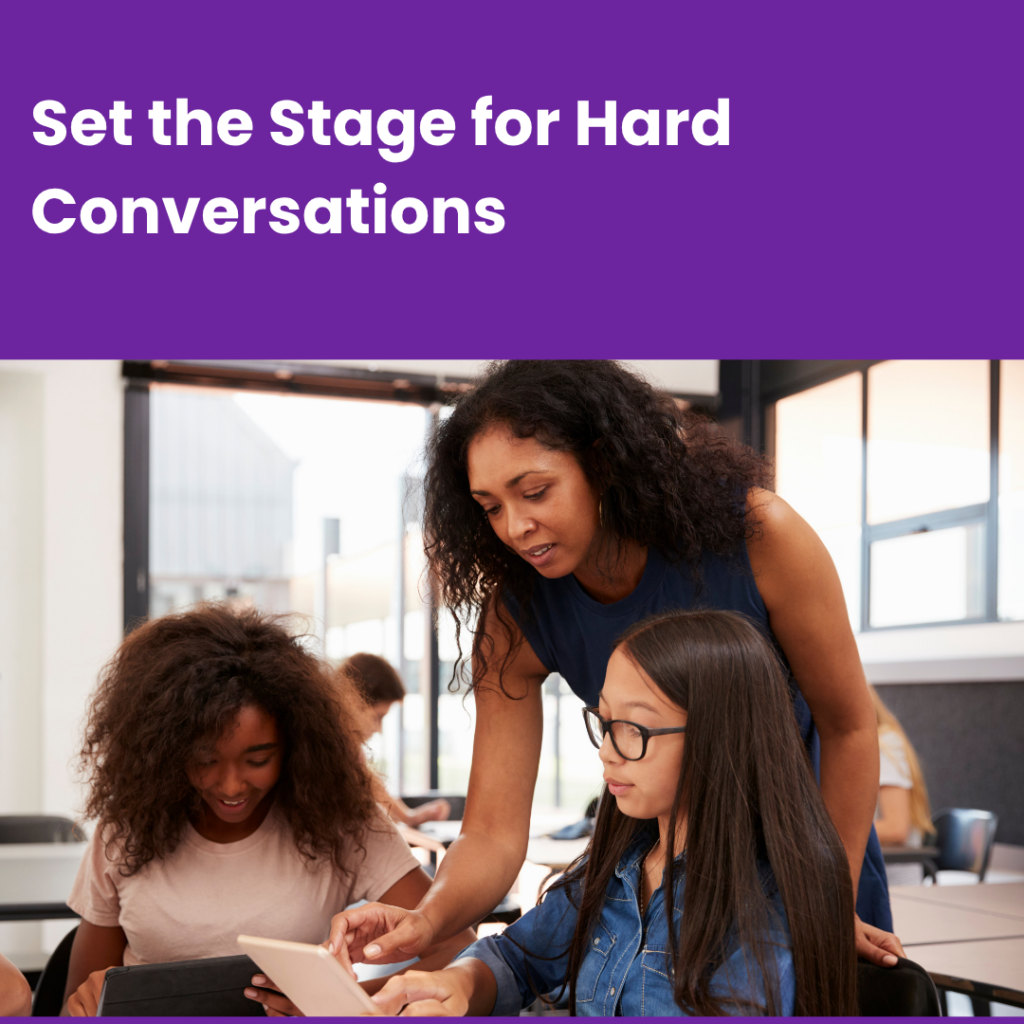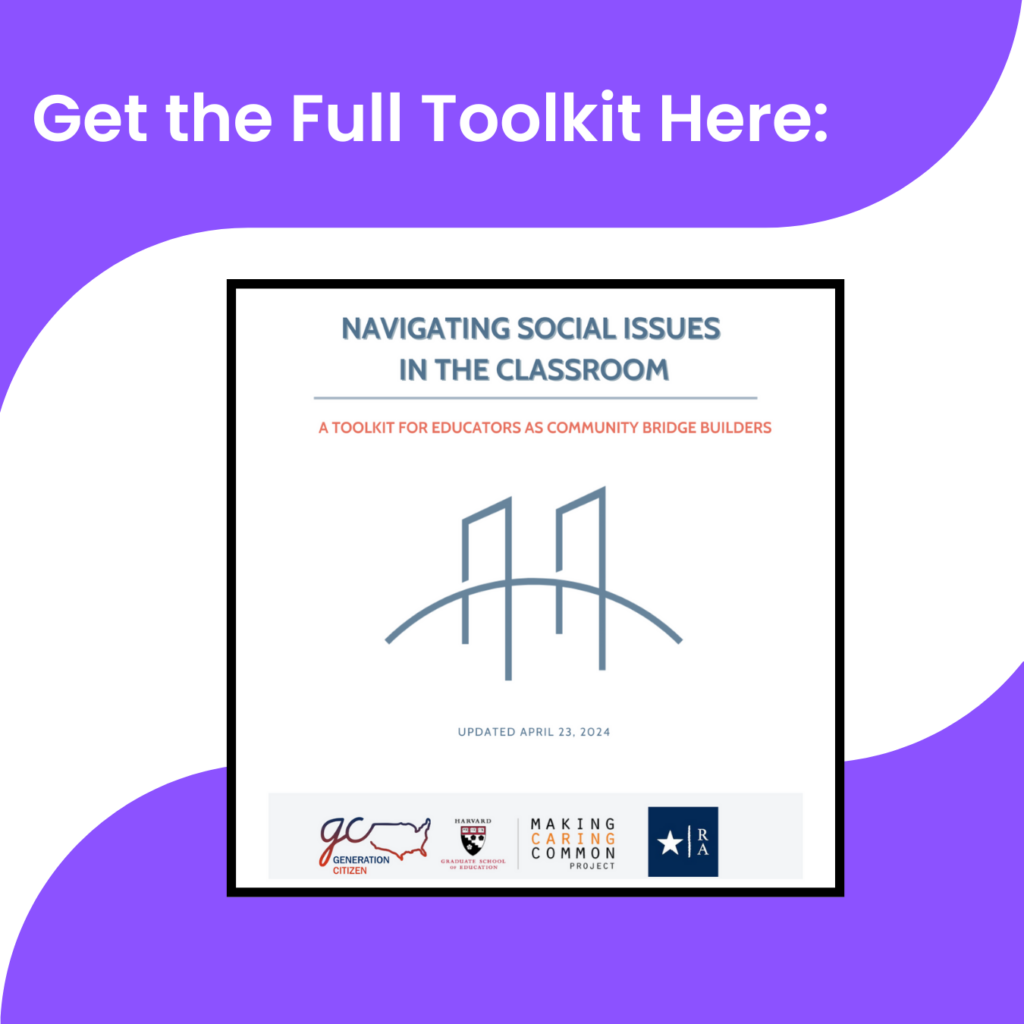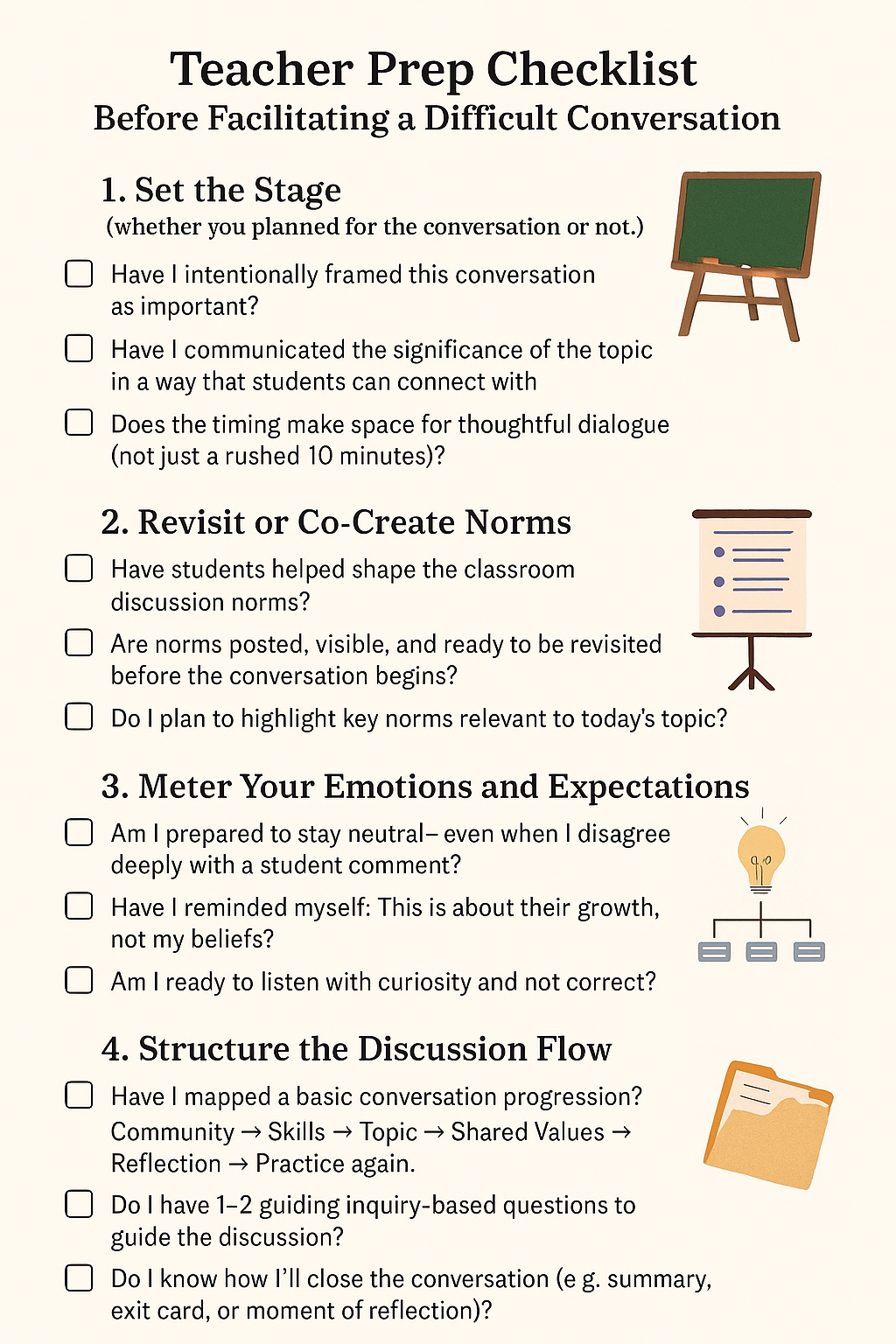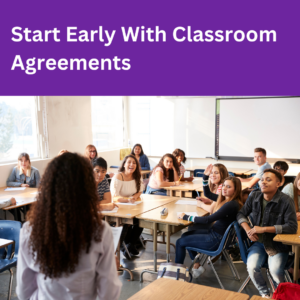
Start Early with Classroom Agreements
June 4, 2025
Setting the stage for conversations starts with your expectations and mindset.
Difficult conversations aren’t just regular classroom moments — they take structure, care, and preparation. Whether the conversation is planned or it comes up unexpectedly, it’s important for the teacher to respond constructively, not reactively. Even if the moment catches you off guard, you can still bring structure to the conversation to help students feel safe, heard, and supported. Here is a checklist to prepare you for successful classroom dialogue.
1. Meter Your Emotions and Expectations
As educators, it's natural to feel strongly—especially when a student voices something you personally disagree with or find troubling. But during difficult conversations, your role is not to convince. It’s to guide, to listen, and to hold the space open for student exploration and accountability while upholding classroom norms.
2. Lead with Curiosity, not Correction.
It can be hard when your internal voice is screaming, “That’s wrong!” But modeling emotional regulation is part of what teachers can model for students on how to disagree respectfully. Aim to bring a tone of neutrality, not because you don’t care, but because you’re stewarding the dialogue, not steering it with your own opinions.
Remember:
This is not the time to share your personal stance. It’s a moment to elevate your students’ ideas, help them listen to one another, and coach them toward critical reflection and civil engagement.
3. Build a Community of Common Ground
Begin by reinforcing a sense of belonging and connection. To create a common foundation, remind students of shared experiences, goals, or values. This step can include a short community-building activity or simply revisiting the discussion norms. When students feel connected to each other, they’re more likely to listen with empathy and participate respectfully.
Build Core Skills:
- Set and Define Discussion Agreements
- Work on a Caring Classroom Culture
- Emphasize Dialogue over Debate
- Build a Classroom Culture of Understanding through short, engaging, and fun activities.
4. Introduce the Topic and Explore
Many of these conversations will happen organically. But they can also be planned. When this occurs, present the discussion topic clearly and with context. It’s important to frame it as an opportunity for learning, not argument. That this is an open conversation where all voices are welcome and that the voices respect the classroom environment and norms.
It is best to start with avoiding emotionally loaded language, and encourage students to ask clarifying questions before diving in. Providing background knowledge or posing a thoughtful prompt can help focus the conversation.
5. Turn Comments into questions.
Turn a student comment or idea into an open-ended question. This shifts the focus from reaction to exploration and encourages deeper thinking. Present the topic with clarity and context, framing it as a chance to learn—not to argue. Make it clear that all voices are welcome when shared with respect. Avoid emotionally charged language, and encourage students to ask clarifying questions. Offering background or a thoughtful prompt helps focus the conversation and set a reflective tone.
Example:
Student comment:
“That’s just wrong — people like that don’t belong here.”
Turned into an open-ended question:
“What do you think makes someone feel like they belong or don’t belong in a community?”
“How could we explore different views about belonging without making assumptions?”
6. Use a Checklist
The checklist is a simplified resource adapted from Navigating Social Issues in the Classroom: A Toolkit for Educators as Community Bridge Builders—a guide created through a collaboration between Generation Citizen, Rural Assembly, and Making Caring Common.
We've pulled key ideas from the original to offer you a quick-start version for the classroom—something you can easily use as you build a culture rooted in connection, curiosity, and care.
Designed with middle and high school teachers in mind, the toolkit offers practical strategies to help students engage in meaningful, respectful dialogue across their differences.





